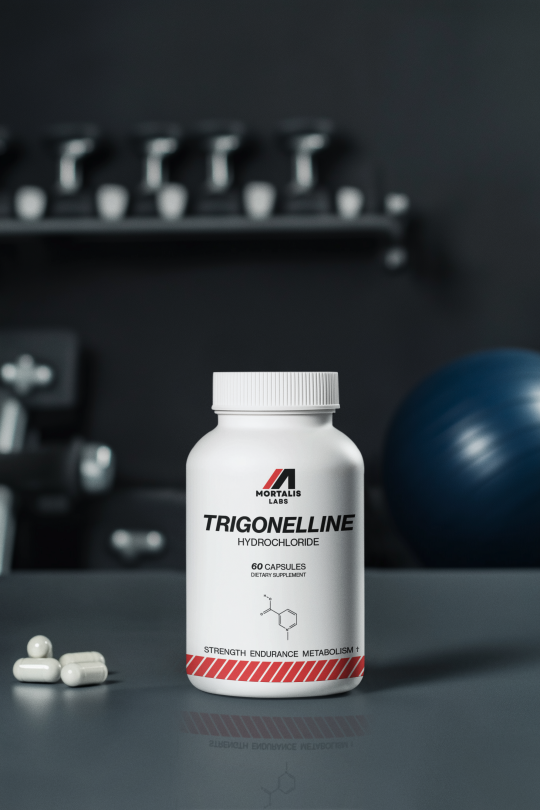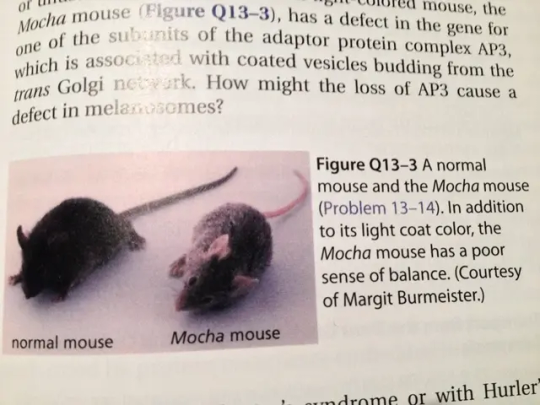#intracellular
Explore tagged Tumblr posts
Text
Shigella is an intracellular parasite, exploiting the inside of our macrophages.
"Plagues Upon the Earth: Disease and the Course of Human History" - Kyle Harper
#book quote#plagues upon the earth#kyle harper#nonfiction#shigella#intracellular#cells#parasite#exploitation#macrophage
0 notes
Text
SciTech Chronicles. . . . . . . . . . . . . . . . . . . . .Jan 19, 2025
#heart#muscle#noninvasive#extracellular#intracellular#Upcycling#polymer#ruthenium#metathesis#CRISPR#cognitive#neuroscience#meta-analysis#HIT#executive-functioning#Perplexity#TikTok#merger#ByteDance#no-sale#1.69AU#8x#simulations#1%#flyby
0 notes
Text
I am going to replace all of the water in five pebble's lymphatic conduits with milk.
#I actually don't think thats water in his conduits#I think its DILUTED with water#I forgot the fuckin. chemical term for it.#but it acts more as intracellular fluid#there's probably a lot more gunk in there#if it was his RTA then it would just be purified water#iterator#fp#garbage wastes#rain world
50 notes
·
View notes
Text
thinking about the multifaceted illusion of space in medicine (i am crying about it)
#dylanlila.mp3#hello... it's like these are separate rooms but we are treating them as one vs. these are all connected but we are introducing a barrier#in order to understand them better... it's the alien pov (at least that is how i call it)#alien comes to earth and has zero recognition of a country as a concept it's all equally foreign and equally human#it's very cool when you apply it to medicine... a human looks inwards and is met with something equally familiar and equally foreign#also just... interaction between the outside and the body... the outlines aren't solid safe from the intracellular space#but that too is an illusion... what happens inside the cell is carefully protected by its own limits but none of it exists#without interaction with what lies on the other side...#i have a lot to say on this but i'm settling for this one sentence and that is I LOVE PHYSIOLOGY
5 notes
·
View notes
Text

Asking the real questions
#i'm making flash cards for my microbiology test lol#for those curious: it's an obligate intracellular parasite#gram negative#and has no peptidoglycan#there is nothing else anyone needs to know about chlamydia#oscar talks to himself#school blogging
5 notes
·
View notes
Text
I love to listen and relisten to this podcast will kill u so much fr. Comfort podcast even tho the diseases they talk abt are obv often rly gnarly but i love. Microbiology and medical history<3
Also specifically relistening to the leishmaniasis episode made me once again go Ah! We should kill the profit driven pharma industry with hammers!
#its an odd mix sometimes between woah the like. biology of this disease is fascinating#and also being like well it is also absolutely awful and terrifying that ppl have to deal w those diseases#saw a poll going around a whiiile ago that was like haha whats ur favourite of these old timey diseases#and all of them but smallpox where things ppl are still dying from today#so like that left a rly bad taste in my mouth....like#the plague still exists...tuberculosis kills a lot of ppl a year......#like idk man#anyways im rambling#sel talks#like i think intracellular bacteria are so cool but that does not mean rocky mountain spotted fever is cool
2 notes
·
View notes
Text

The Science Research Diaries of S. Sunkavally, p 615.
#carbonic anhydrase#minerals#axis of symmetry#static charge#epidemics#cilia#tetracycline#intracellular parasites#whooping cough#hyoglycemia#Drosophila#DNA polymerase#avian erythrocyte#spontaneous mutation#satyendra sunkavally#theoretical biology#manuscript#calligraphy#cursive handwriting
0 notes
Text
youtube
#Photodynamic therapy#aggregation-induced emission#AIE-PSs#photosensitizers#reactive oxygen species#tumor microenvironment#cancer therapy#ROS generation#non-invasive treatment#tumor targeting#cancer research#precision medicine#light activation#photostability#intracellular aggregation#aggregation-enhanced photosensitizers#oncology advancements#tumor selectivity#biophotonics#therapeutic precision.#Youtube
0 notes
Text
How does the Avastin injection (bevacizumab) suppress intracellular tumour growth?

Avastin, known scientifically as bevacizumab, is a pivotal drug in oncology. It is known for its efficacy in suppressing intracellular tumour growth through targeted inhibition of vascular endothelial growth factor (VEGF). This blog explores the profound impact of Avastin across various cancer types, detailing its mechanism of action, clinical applications, safety profile, and future directions in cancer treatment.
What does Avastin do to cancer patients?
Avastin works by specifically binding to vascular endothelial growth factor (VEGF), a protein that stimulates the growth of new blood vessels necessary for tumour progression. Here is everything you need to know:
Inhibits Tumor Growth: Avastin (bevacizumab) works by precisely targeting and inhibiting vascular endothelial growth factor (VEGF). This protein is crucial for the formation of new blood vessels that tumours need to grow. This precise mechanism of action is what makes Avastin so effective. By blocking VEGF, Avastin reduces the blood supply to tumours, thereby slowing down their growth and potentially shrinking them.
Enhances Treatment Effectiveness: When used in combination with chemotherapy or other cancer treatments, Avastin enhances their effectiveness. By reducing the blood flow to tumours, Avastin helps other treatments penetrate tumours more effectively, improving overall treatment outcomes.
Delays Disease Progression: Avastin is known to prolong the time before cancer progresses. In clinical trials, it has been shown to increase progression-free survival rates in various types of cancers, including colorectal, lung, breast, and kidney cancers, as well as glioblastoma.
Improves Quality of Life: For many cancer patients, Avastin not only slows disease progression but also improves the quality of life by reducing symptoms associated with advanced cancer, such as pain and discomfort caused by tumour growth.
Potential Side Effects: While generally well-tolerated, Avastin can cause side effects such as hypertension, proteinuria (excess protein in the urine), bleeding, gastrointestinal perforation, and impaired wound healing. Close monitoring by healthcare providers is essential to manage these risks effectively during treatment.
What types of cancer is Avastin used for?
In clinical settings, Avastin 100mg injection is prescribed to patients with advanced stages of cancer, including colorectal, lung, breast, and kidney cancers, among others. Its effectiveness lies in its ability to disrupt the tumour's blood supply, thereby shrinking tumours and preventing their progression.
Colorectal Cancer: Avastin is approved for use in combination with chemotherapy for metastatic colorectal cancer. It helps to slow down tumour growth and improve survival rates.
Lung Cancer: In non-small cell lung cancer (NSCLC), Avastin is used as a first-line treatment in combination with chemotherapy. It has been shown to extend survival and delay disease progression.
Breast Cancer: Avastin may be used in combination with chemotherapy for metastatic HER2-negative breast cancer. It helps to reduce blood flow to tumours, potentially shrinking them and improving treatment outcomes.
Kidney Cancer: Avastin is utilised for advanced renal cell carcinoma (kidney cancer), often in combination with other targeted therapies or immunotherapy agents. It targets VEGF, which is crucial for tumour blood vessel growth.
Does Avastin have side effects?
Avastin has demonstrated significant benefits for cancer patients, especially those in advanced stages of the disease. It notably improves both progression-free survival and overall survival rates by targeting vascular endothelial growth factor (VEGF), a protein crucial for tumour blood vessel formation.
While Avastin is generally well-tolerated, it can cause several potential side effects that require careful monitoring. Common side effects include
Hypertension (high blood pressure)
Proteinuria (excess protein in the urine)
Bleeding tendencies
Gastrointestinal perforation (a rare but serious complication)
Impaired wound healing
How do patients respond to Avastin treatment?
While Avastin is generally well-tolerated, it can cause several potential side effects that require careful monitoring. Common side effects include hypertension (high blood pressure), proteinuria (excess protein in the urine), bleeding tendencies, gastrointestinal perforation (a rare but serious complication), and impaired wound healing. Patients undergoing Avastin treatment should be closely monitored for these side effects, and healthcare providers may adjust treatment regimens as needed to manage these risks effectively.
#Avastin#Avastin injection#bevacizumab#Avastin treatment#oncology#intracellular tumour#Colorectal Cancer#Lung Cancer#Breast Cancer#Kidney Cancer#Avastin side effects#cancer patients#non-small cell lung cancer#cancer treatment
0 notes
Text
i can’t believe how fucking bad i bombed my quiz today you mean i have to know bio to do biophysics ?
1 note
·
View note
Text
Intracellular cytokine flow cytometry
Another elegant, functional approach to detect cytokine production in T-cells is by intracellular cytokine flow cytometry. Following brief antigen exposure, cytokines are trapped intracellularly by the addition of brefeldin A to block the secretory pathways. After permeabilization, specific anti-cytokine fluorescent antibody conjugates can pass into the cells.
0 notes
Text
my favourite pomodoro stopped working 😭😭😭 it crashes around a minute from ending no matter what i do. i'm going to light a candle for it and for me
0 notes
Text
Our First Pre-Registration is Live! Replication of...
After months of efforts, my co-authors and I are absolutely delighted to share this preprint, which is special in many ways: Said, Maha, Mustafa Gharib, Samia Zrig, and Raphaël Lévy. 2023. “Replication of “Carbon-dot-based Dual-emission Nanohybrid Produces a Ratiometric Fluorescent Sensor for in Vivo Imaging of Cellular Copper Ions”” OSF Preprints. November 29. doi:10.31219/osf.io/kf9qe. This…
View On WordPress
#bionano#endosome#intracellular delivery#intracellular sensing#nanoparticle#registered report#replication
0 notes
Text


Trigonelline is a methylated form of niacin and is a recently isolated molecule that could be the secret ingredient in your stack. This form of the B vitamin is involved in the generation of NAD+, a cofactor for over 500 metabolic processes in cells. Trigonelline promotes cellular repair and energy, and as we’ll see, exerts quite a few benefits that are specifically useful for anyone training seriously.
Trigonelline is found in several plant-based foods, notably coffee beans and fenugreek seeds. Green coffee beans contain trigonelline concentrations ranging from 0.6% to 1.0% by weight. However, traditional dietary sources don’t provide sufficient amounts to elicit significant physiological effects. For instance, the average trigonelline content in a cup of coffee is approximately 53 mg, and about 50-80% of trigonelline decomposes during the roasting process, leaving virtually nothing for your body to make use of.
Recent research published on this naturally occurring alkaloid highlights its potential in enhancing muscle function and combating age-related decline. A 2024 study published in Nature Metabolism identified trigonelline as a novel precursor to nicotinamide adenine dinucleotide (NAD+), a molecule essential for energy metabolism and mitochondrial function. The study demonstrated that trigonelline supplementation improved muscle strength and reduced fatigue in aged mice, suggesting that it can head off the natural muscle decline seen in aging, even in those who are already training at capacity.
NAD+ gets discussed a lot in the longevity space because of its natural and steep decline over the years, tied to all the diseases of aging. It's a metabolic linchpin that determines how efficiently your cells convert fuel into usable energy. For athletes, that efficiency translates into faster recovery, better performance under load, and greater resilience under metabolic stress. Or, you know, complete lack of those things if you don’t have enough of it.
NAD+ is required for redox (oxidation–reduction) reactions in mitochondrial energy production and is a cofactor and substrate for longevity-promoting sirtuins and other enzymes involved in muscle repair and adaptation. During intense physical activity, NAD+ levels drop as demand for ATP surges. Replenishing intracellular NAD+ is critical not only for restoring mitochondrial output but also for initiating the cellular programs that rebuild and reinforce muscle tissue [1].
Trigonelline offers a direct path to NAD+—one that bypasses the liver and supports muscle tissue specifically. In a landmark 2024 study, researchers at EPFL and Nestlé Health Sciences (yes, that Nestlé, but there aren’t any conflicts of interest, we checked) demonstrated that trigonelline functions as a previously unidentified NAD+ precursor, rapidly taken up by skeletal muscle cells and converted into NAD+ via a salvage pathway independent of the traditional NR or NMN routes [2]. This muscle-specific uptake is particularly important for athletes, who require localized replenishment in the very tissues under stress.
Most NAD+ precursors—including nicotinamide riboside (NR) and nicotinamide mononucleotide (NMN)—undergo hepatic metabolism before entering systemic circulation. This creates a bottleneck at your liver for targeted muscle repair. Trigonelline appears to bypass that constraint by delivering precursors directly where they're needed most: the muscle fibers responsible for performance and endurance.
This shift in delivery has implications beyond simple NAD+ restoration. In the same Nature Metabolism study, aged mice supplemented with trigonelline showed significant improvements in grip strength and fatigue resistance—outcomes tightly linked to muscle NAD+ availability. Unlike systemic precursors that may elevate circulating NAD+ levels without improving localized bioenergetics, trigonelline drives changes in muscle mitochondrial density and function.
For athletes, this is the difference between feeling recovered and actually being rebuilt.
Mitochondria Make Muscles Move
Endurance Starts in the Electron Transport Chain
Every sprint, every lift, every set depends on one thing: mitochondrial output. The ability to generate ATP on demand—efficiently and cleanly—is the defining line between sustained power and early fatigue. Trigonelline’s value lies not just in elevating NAD+ levels, but in what that elevation enables at the level of mitochondrial performance.
NAD+ drives oxidative phosphorylation, the mitochondrial pathway responsible for converting nutrients into ATP. When NAD+ is depleted, electron transport slows, reactive oxygen species accumulate, and mitochondrial output tanks—resulting in performance collapse and prolonged recovery. Replenishing NAD+ restores mitochondrial throughput, enhances metabolic flexibility, and allows cells to switch between carbohydrate and fat oxidation with minimal friction [3].
Trigonelline’s role as a direct NAD+ precursor in muscle tissue makes it especially powerful in this context. By bypassing hepatic metabolism and restoring NAD+ where it's most needed, it kickstarts mitochondrial biogenesis—activating pathways like PGC-1α that drive the formation of new mitochondria and increase the efficiency of existing ones [4]. This isn’t theoretical: in the 2024 Nature Metabolism study, trigonelline supplementation significantly boosted mitochondrial content and activity in aged mice, restoring performance metrics typically lost with age and overtraining [2].
This cellular shift translates directly to the field, the track, and the gym. More mitochondria means more ATP per unit of oxygen consumed. This is the underpinning of higher VO₂ max, improved lactate clearance, and extended time-to-exhaustion. Trigonelline supports this adaptation at the source, which means athletes can train harder, go longer, and bounce back faster—without relying on stimulants or sketchy ergogenics.
More NAD+ in muscle equals better mitochondrial kinetics, which equals better athletic output. Period.
Strength and Muscle Health
Preserving Power, Not Just Mass
Strength isn’t only about size—it’s about contractile quality, neuromuscular precision, and the cellular capacity to resist breakdown under stress. Trigonelline’s impact on muscle tissue reaches beyond endurance. It supports structural integrity, performance output, and resilience across multiple pathways—especially in the context of aging or chronic training demand.
In the 2024 Nature Metabolism study, trigonelline supplementation restored muscle grip strength and improved fatigue resistance in aged mice, with outcomes exceeding those observed in control groups receiving traditional NAD+ precursors [2]. This effect was tied to increased NAD+ availability in skeletal muscle, which reactivated SIRT1- and PGC-1α-dependent pathways responsible for mitochondrial biogenesis, inflammation control, and protein maintenance—all critical for contractile performance and mass preservation [5].
NAD+ also plays a protective role against muscle wasting. It regulates the balance between anabolic and catabolic signaling, modulating FoxO transcription factors and suppressing atrophy-related genes like MuRF1 and atrogin-1 [6]. This anti-catabolic signaling becomes especially important during periods of calorie deficit, illness, or overreaching, when muscle degradation accelerates. Trigonelline, by supplying NAD+ directly to muscle cells, may help maintain lean mass even under systemic stress.
One overlooked aspect of muscle performance is neuromuscular junction (NMJ) stability, or, the connections between nerves and muscle fibers. These connections go both ways, with afferent signals carrying sensory feedback from muscle to brain, and efferent signals delivering motor commands from brain to muscle. Maintaining the integrity of this bidirectional communication is essential for coordination, strength, and rapid recovery from fatigue. NAD+ is required for the function of enzymes that protect NMJ architecture—particularly in aging or disease models where synaptic decline contributes to strength loss [7]. Trigonelline’s direct muscle delivery may therefore preserve the electrical signaling fidelity needed for explosive power and motor unit recruitment.
Muscle Fiber Type Preservation
Emerging evidence suggests that NAD+ availability influences muscle fiber type composition. High NAD+ levels favor the maintenance of fast-twitch (Type II) fibers—those responsible for strength, speed, and power—by enhancing mitochondrial support without triggering full transition to slow-twitch oxidative profiles [8]. This has implications for athletes seeking to maintain peak force output without compromising endurance. By elevating muscle NAD+ directly, trigonelline may help preserve this delicate fiber balance.
Trigonelline is formulated not to just support general energy—but to protect the architecture of athleticism at the cellular level.
For a reliable, pure form of trigonelline with zero additives, you can trust Mortalis Labs.
#longevity#trigonelline#nmn#fitness#gym#metabolismboost#metabolismsupport#healthylifestyle#healthtips#healthy living
513 notes
·
View notes
Text

The Science Research Notebooks of S. Sunkavally. Page 311.
#Earth core#thorium#potassium#intracellular cations#superoxide#hydrogen atom#excited state#covalent bond#cosmic dust#Sun#helium#Himalayan rabbit#plant speciation#polyploidy#gigantism#cortisol#euglenoids#satyendra sunkavally#trypanosome#lysosomal membranes
0 notes
Text
AP3D1 - Adaptor-Related Protein Complex 3 Subunit Delta 1
The protein encoded by this gene is associated with the golgi region, as well as more peripheral structures. This subunit is implicated in intracellular biogenesis and trafficking of pigment granules, and possibly platelet dense granules and neurotransmitter vesicles. Defects in this gene are a cause of a new type of Hermansky-Pudlak syndrome.
Mouse
mocha (three mutations)
Inheritence: recessive.

image source
#thank you reddit user nanopdfgfdgdf for taking a photo of this page of your textbook#color genes across species#ap3d1#ap3#dilution#mouse
99 notes
·
View notes